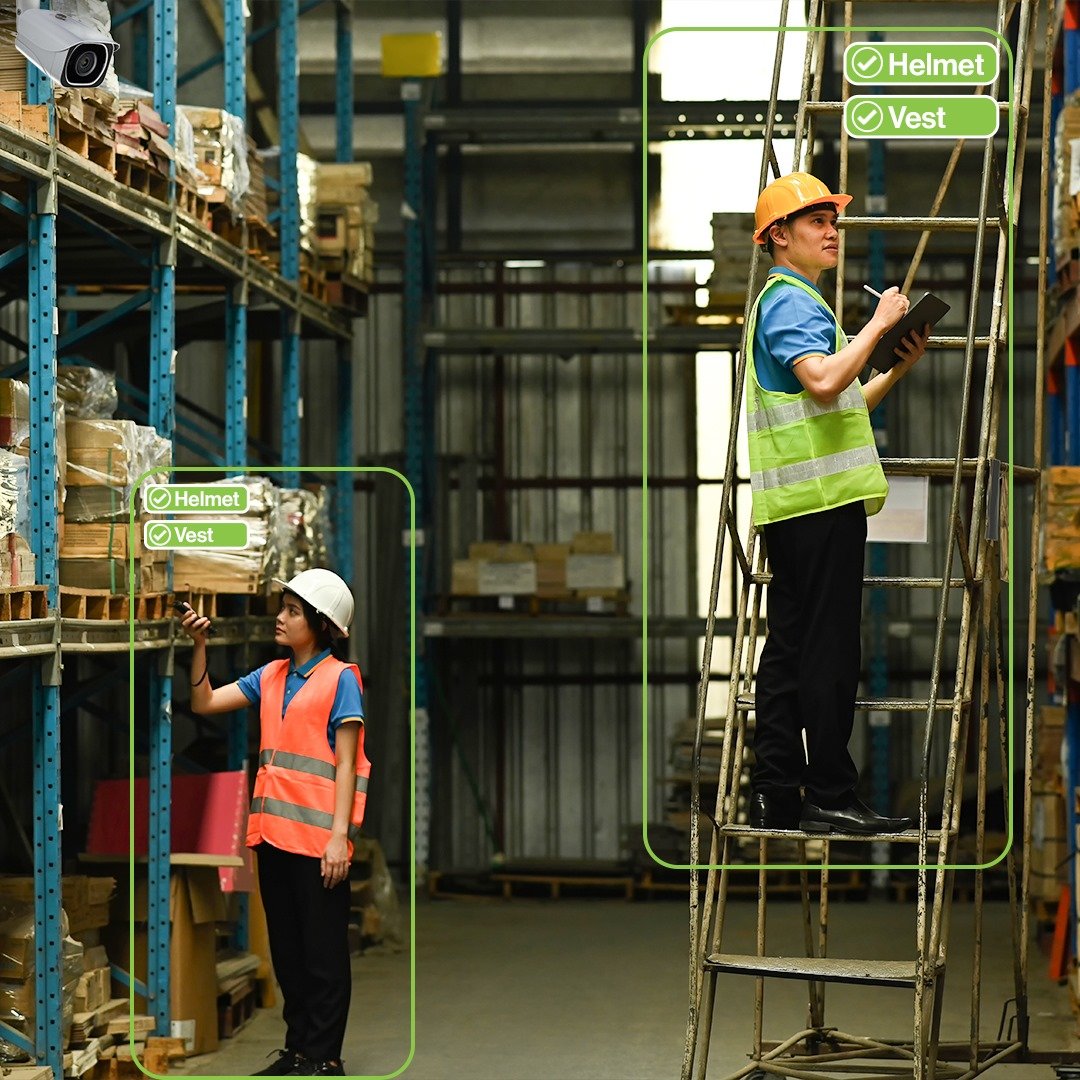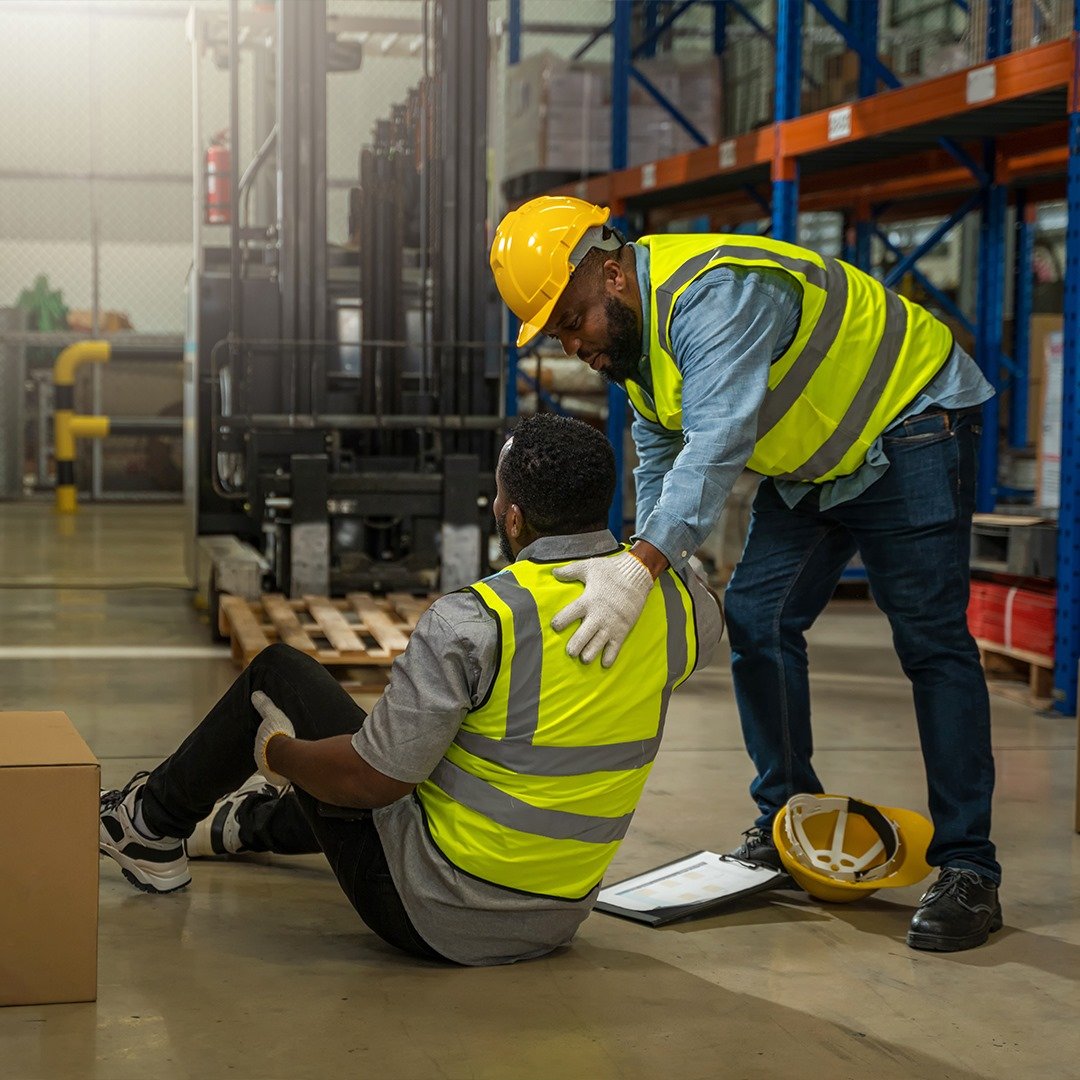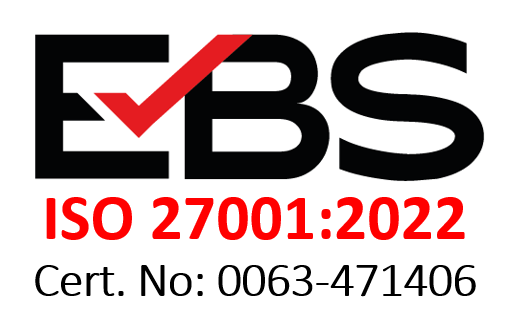Top 10 Computer Vision Use Cases for Compliance and Workplace Safety
What is Computer Vision?
Computer vision is a powerful branch of Artificial Intelligence (AI) that enables computers to understand, interpret, and analyze visual data from the real world, such as videos, images, or live feeds. The use of computer vision is transforming industrial safety by enabling automated monitoring and real-time hazard detection
Computer vision processes images or videos much like how the human eye processes visual data. However, the human eye has limitations, unlike computer vision, which can accurately and quickly process a large amount of visual information in real-time.
Computer vision solutions can analyze images and produce insightful information by employing complex techniques, including object detection, facial recognition, and motion tracking. Nowadays, these features are frequently employed in fields where safety, visibility, and regulation are crucial, making computer vision essential for ensuring compliance.
Importance of Computer Vision in Compliance
Compliance is an operational need in the complicated regulatory environment. Every organization, whether it is logistics, construction, manufacturing, or healthcare, needs to follow a set of standards. In order to achieve these legal and ethical standards, firms must continuously monitor their environments and actions, whether it is related to maintaining hygiene standards, adhering to workplace safety rules, or guaranteeing quality control.
Traditional compliance techniques, which often rely on staff reporting, audits, or manual supervision, can be expensive, inconsistent, and prone to error. This is where computer vision has become indispensable. Computer vision automates this process by offering constant, real-time monitoring and analysis. It ensures that violations are detected and corrected before they escalate, lowers the risk of oversight, and lessens reliance on manual procedures.
Enhancing Workplace Safety through the Use of Computer Vision
Computer vision is applied within safety programs by use of strategically positioned AI-powered CCTVs, which collect visual data by capturing videos of the environment. This data is then interpreted and analyzed by advanced AI algorithms to identify unsafe behaviours and potential hazards. Computer vision automatically detects and identifies risky situations, therefore allowing safety teams to focus on corrective action rather than manually monitoring the whole environment.
Here are 10 powerful use cases of computer vision that organizations use to strengthen both safety and compliance:
- Real-time Hazard Detection: Computer vision, in real-time, scans and recognizes actions that suggest risky behaviour like spills and obstructions before they cause any harm, so that companies can quickly act to prevent accidents.
- PPE Compliance Monitoring: AI-powered CCTVs immediately detect whether Personal Protective Equipment (PPE), such as helmets, gloves, vests, and masks, is being used by the workers. Lack of protective gear is immediately flagged as a violation, and in real-time, alerts are sent to designated safety experts to ensure that proper corrective action is taken.
- Worksite Monitoring and Surveillance: Computer vision monitors large worksites and provides robust surveillance, thus enhancing compliance with safety protocols and providing real-time data to supervisors to improve accountability.
- Fall Detection and Prevention: In large and high-risk organizations where falls are a leading cause of workplace injuries, the use of computer vision offers advanced detection of abnormal movements, including falls. Alerts are then instantly triggered, enabling a faster emergency response.
- Vehicle Control: Use of computer vision in forklift operations ensures that the vehicle’s speed, path, and proximity to people or objects are monitored. It reduces the risk of collision and enforces vehicle safety standards, especially in industrial zones or warehouses.
- Emergency Response Optimization: In emergencies, the use of computer vision plays a significant role by recognizing signs of fire, smoke, or unusual motion, after which it sends quick alerts for evacuation protocols, such as tracking person counts, responding to worker incidents, and ensuring orderly evacuation by monitoring emergency exits.
- Chemical Exposure Monitoring: In labs and certain industrial settings, the use of computer vision includes identifying any visual indicators of chemical leaks, improper handling of chemicals, or missing gear.
- Tool and Equipment Monitoring: By the use of computer vision, you can keep track of the usage of tools and equipment, ensuring the proper safety protocols of handling of equipment are enforced, ultimately reducing the risk of accidents caused by improper handling or malfunctioning equipment.
- Restricted Zone monitoring: Access control is a major compliance concern. The use of computer vision in access control ensures that no unauthorized personnel enter restricted or high-risk zones.
- Environmental Monitoring: The use of computer vision extends to even monitoring environmental conditions such as air quality and temperature to ensure that a safe and healthy work environment is provided to all employees.
The integration of these use cases of computer vision contributes to workplace safety and the well-being of employees in real-time.


How can The Disrupt Labs help?
The Disrupt Labs offers AI computer vision, providing proactive hazards detection and real-time monitoring for compliance management. Our solution ensures data-driven decision-making, effective incident response, and safety compliance. We improve operational effectiveness and safety by lowering human error. Our Computer Vision AI solution offers following specialized safety monitoring modules:
- PPE Monitoring Module: For ensuring worker safety, PPE is essential. To provide a safe working environment, our computer vision continuously checks to make sure that boots, masks, vests, helmets, and other equipment are properly equipped.
- Housekeeping Compliance Module: Accident prevention requires unobstructed emergency exits, clear walkways, and timely spill cleanup. Our AI models keep an eye on the workplace environment so that accidents like these can be prevented.
- Area Access & Zone Control Module: AI monitoring ensures operator presence and restricted access and worker counts for safety. This helps prevent any accidents caused by human error.
- Forklift Safety Module: The safety of forklifts is crucial. For effective material handling, our AI models assure appropriate parking, safe distance, forklift-person proximity and adherence to designated aisles.
- Emergency Situation Module: Using our trained AI models, we can respond to worker incidents, keep track of personnel numbers, and ensure a smooth evacuation through authorized exits during emergencies.
By using computer vision across these interconnected modules, The Disrupt Labs helps organizations stay compliant, avoid incidents, and build a proactive safety culture.
Conclusion
The use of Computer Vision is now a practical, proven solution that businesses are using today to meet compliance standards and protect their workforce. By real-time monitoring of compliance safety standards, safety teams are now able to take preventive measures, reducing the chances of injury and harm.
Ready to future-proof your compliance and build smarter, safer workplaces? Let The Disrupt Labs guide your journey with AI-powered computer vision solutions. Contact us today.
Frequently Asked Questions
The use of computer vision in compliance involves using AI-powered cameras to monitor workplace environments, detect safety violations, and ensure adherence to regulations in real time.
Computer Vision helps by continuously monitoring for hazards, ensuring PPE compliance, and providing real-time alerts for unsafe conditions, helping businesses adhere to OSHA regulations.
High-risk sectors such as construction, manufacturing, oil & gas, logistics, benefit the most, basically any company where safety compliance is critical to worker safety and legal regulation.
The Disrupt Labs applies computer vision to ensure regulatory compliance through PPE monitoring, unauthorized access detection, hazard identification, and real-time incident alerts using AI based CCTV cameras.

